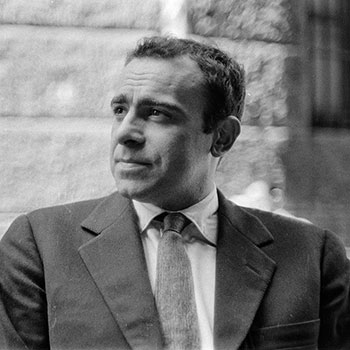Bobo Piccoli
Bobo Piccoli was born in Milan in 1927 into a family of intellectuals. Casa Piccoli is frequented by Mario Sironi, Carlo Carrà, Giuseppe Ungaretti, Salvatore Quasimodo and many other artists. Piccoli is trained in the culture of the classics, knows and internalizes Greek art, sculpture and architecture, iconography and mosaics, loves Giotto and the Renaissance, Caravaggio and Savinio, has always been interested in light in art and in architecture, in cinema and theater. He reads Bertold Brecht, Samuel Beckett and Jean Paul Sartre, the surrealists Antonin Artaud and André Breton, and Italo Calvino's Fiabe Italiane. Artist and painter, Bobo Piccoli, has always reflected on the synthesis of the arts from which his projects with architects such as Roberto Menghi, Alberto Scarzella, Marco Zanuso, Leonardo Fiori, Ezio Sgrelli. Exemplary are his interventions for iconic architecture such as the Petrochemical of Brindisi (1959), Ian Battistoni, the Palazzo delle Stelline in Corso Magenta in Milan (1972), the Civic Center of Pieve Emanuele, (1980), the town square of Cislago (1981). In 1968 the artist began working for FontanaArte for which he created projects that combine art and industrial design, reflecting both Bobo Piccoli's attitude and the company's vision. For FontanaArte, the artist created various elements including the lamps Re (1968), Regina (1968), Modulo (1969), Clessidra (1970) and the Reame mirror (1968).
















 Accedi con google
Accedi con google